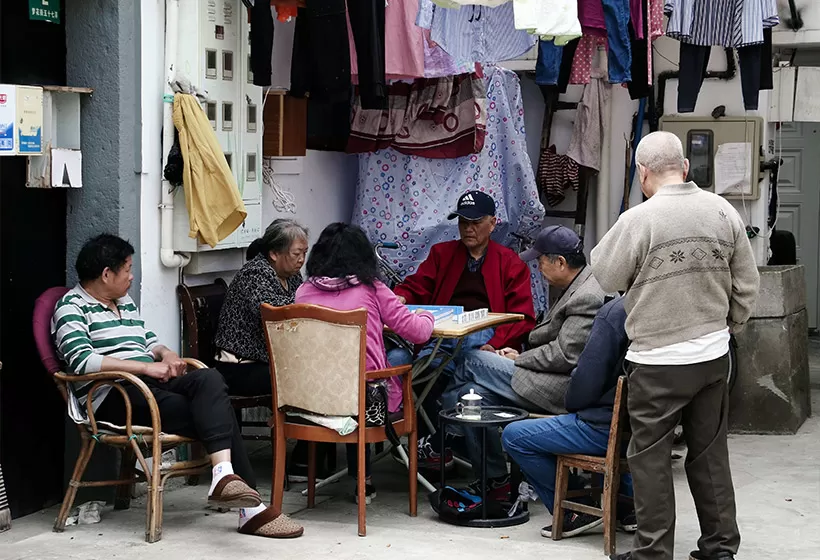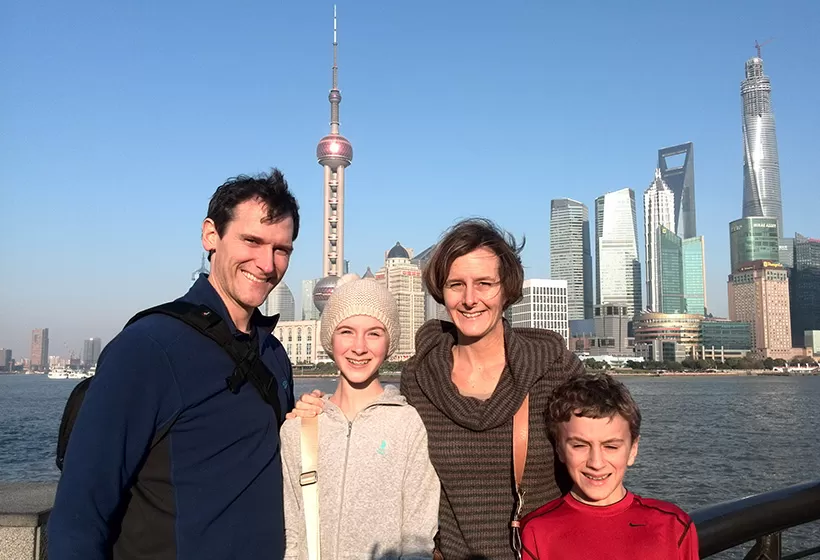Short Introduction to Shanghai Local Culture: History, Nation, Diet, Architecture, etc.
Shanghai, where the Huangpu River meets the Yangtze, is divided into historic Puxi in the west and modern Pudong in the east. Bordered by Hangzhou Bay to the south and neighboring Jiangsu and Zhejiang provinces to the west. Shanghai, also known as “Hu” or “Shen,” is a multicultural metropolis that blends Chinese tradition with modern sophistication. As one of China’s four municipalities (alongside Beijing, Tianjin and Chongqing), it is home to over 24 million residents. Shanghai is also a city where all 56 of China’s ethnic groups are represented.
The city’s emblem features a magnolia, the city flower, a traditional sailing vessel and a propeller, symbolizing openness and progress. As a commercial, financial, cultural and international trade center in eastern China, as well as a major transportation hub and international cruise port, Shanghai is often called the “Paris of the East.” It is a global tourist destination, welcoming around one million visitors annually.
Brief History
Shanghai’s history dates back over 6,000 years to its formation as land emerged from the sea. During the Warring States period, it belonged to the State of Chu and was the fief of Lord Chunshen, giving rise to its ancient name “Shen.” The name “Shanghai” later originated from the tributary “Shanghai Pu” of the Songjiang River.
In the Tang dynasty, the area belonged to Huating County and Kunshan County. In 1267, during the Southern Song dynasty, a market town was established on the west bank of the Shanghai Pu and named “Shanghai Town.” In the Yuan dynasty, Shanghai was officially designated as a county, marking the beginning of its city status.
By the early Ming dynasty, the region of Songjiang had become one of the most economically significant in China. By the mid-Ming period (16th century), Shanghai had become a national center for the cotton textile industry. In the early Qing dynasty, cotton cultivation, hand-weaving, and the sandboat trade became the region’s key industries. In 1685, the Qing government established a customs office in Shanghai.
Following the Treaty of Nanking in 1842, Shanghai was opened as a treaty port in 1843 and became the site of the British consulate. The 1845 Land Regulations laid the groundwork for foreign concessions. By 1848, the northern boundary of the concessions extended to the Suzhou Creek, and the western boundary reached Tibet Road.
In 1927, Shanghai was designated a Special Municipality directly under the central government and renamed Shanghai Municipality in 1930. After the founding of the People’s Republic of China in 1949, the Shanghai Municipal People’s Government was established, administering 20 urban districts and 10 suburban areas. With the development and opening-up of Pudong in the 1990s, administrative divisions were adjusted. As of 2016, Shanghai comprises 16 administrative districts.
Region Culture
Shanghai is a city where all 56 of China’s ethnic groups are represented, making it one of the most culturally diverse urban centers in the country. Among them, eight ethnic minorities including the Mongolian, Hui, Miao, Zhuang, Korean, Manchu, Dong and Tujia peoples each have populations exceeding 10,000 in the city.
In Shanghai, the fusion of East and West, tradition and modernity, elegance and trendiness shape a distinctive Haipai culture as the historical charm of Puxi and the modern skyline of Pudong come together in perfect harmony. While Puxi is home to traditional longtang alleyways, old shikumen houses, and vibrant street life rich in heritage, Pudong showcases Shanghai’s futuristic side with towering skyscrapers, innovative art spaces, and sleek urban planning. This striking contrast between old and new, East and West, shapes the dynamic cultural landscape that makes Shanghai unlike any other city in China.
Local Dialect /Language
Shanghai was historically part of the Jiangdong region in the ancient state of Wu and belongs to the Wu-speaking area. The local dialect, known as Shanghainese or Shanghai Wu, is a variety of the Wu dialect family and is quite similar to the dialects spoken in places like Suzhou and Ningbo.
Architecture
Shanghai’s architectural charm lies in its signature Haipai style, a distinctive fusion of East and West. Blending the elegance of traditional Jiangnan water towns with cutting-edge modern design, the city presents a captivating mix of old and new. At the heart of this architectural identity are the iconic shikumen residences, which integrate Western decorative elements with classic Chinese courtyard homes. Features such as dormer windows, Baroque-style archways, and traditional Chinese paifang reflect the unique cultural interplay. Strolling through neighborhoods like Zhenxingli, Rongkangli, and Deqingli, you’ll encounter some of the finest examples of Shanghai’s historic shikumen, offering a glimpse into the city’s rich architectural legacy.
Special Festivals
Traditional Festivals
As a modern international metropolis, Shanghai still preserves many traditional Chinese customs and festivals, bringing color and joy to the city’s fast-paced lifestyle. So, what are some of the most well-known traditional and large-scale festive events in Shanghai? Let’s explore them together.
Mid-Autumn Festival (15th day of the 8th lunar month): Besides enjoying mooncakes, locals in Shanghai like to drink sweet osmanthus wine and eat glutinous rice fermented with osmanthus during this festival. On Mid-Autumn night, many people gather at the Lujia Stone Bridge outside the Xiaodongmen Gate to admire the full moon. The scene, known as "Moon Over the Stone Bridge," is one of the famed “Eight Scenic Views of Shanghai.”
City God Temple Lantern Festival Fair (15th day of the 1st lunar month): Around the Lantern Festival, the City God Temple area in Huangpu District is decorated with elaborate lanterns, attracting both locals and tourists. Streets are filled with traditional music, dragon dances, and lion dances, creating a vibrant and festive atmosphere.
Bathing the Buddha Festival (8th day of the 4th lunar month): This day marks the birth of Sakyamuni Buddha. Temples across the city hold special rituals, including chanting and symbolic bathing of Buddha statues. Major temples such as Jing’an Temple and Guangfu Temple on Fangbang Road host bustling temple fairs. Stalls selling local specialties and goods line the temple entrances, adding a lively market atmosphere to the spiritual celebration.
Modern Festivals in Shanghai
Shanghai International Music Festival (April 28 – May 18): Established in 2001 through the merger of the Shanghai International Radio Music Festival and “Shanghai Spring” International Music Festival, this event showcases world-class performances across genres.
Shanghai International Film Festival (June, 9 days): Launched in 1993, it is China’s only A-category international film festival. The prestigious Golden Goblet Awards are judged by an international jury. The red-carpet opening ceremony, celebrity appearances, and screenings draw film lovers from Shanghai and beyond.
Shanghai Peach Blossom Festival (March–April): Held annually since 1991, this festival celebrates peach blossoms in Nanhui District, where fields of blooming trees create a pastoral landscape and offer a glimpse into local folk customs.
Shanghai International Tea Culture Festival (April or May): Hosted in Zhabei Park, Jing’an District, this is only international tea culture festival in China. Since 1994, it has attracted tea lovers and merchants from around the world. Visitors can explore tea exhibitions, watch tea art and dance performances, and enjoy tea banquets and snacks at nearby venues like Songyuan Teahouse, where traditional music accompanies the tea experience.
Diet Style and Culinary Tastes
As an international metropolis and major port city, Shanghai is home to people from all over China and the world. Over time, Shanghai cuisine has absorbed the strengths of other regional cuisines, especially those of Jiangsu and Zhejiang, forming its own distinctive flavor. Commonly known as “Benbang cuisine(local-style cooking), offering unique dishes such as xiaolongbao (soup dumplings), shengjian bao (pan-fried buns), red-braised pork belly, and drunken chicken. The vibrant food markets and t elegant heritage restaurants provide a rich culinary experience that reflects both its rich history and cosmopolitan flair.
Read More local Food-Restaurants in Shanghai»
Cultural Heritage
Shanghai’s cultural heritage is a rich tapestry woven from both tangible and intangible elements. The city is home to remarkable historical landmarks such as the Guangfulin Relics Park, Longhua Temple, and the classical Yuyuan Garden, which together reflect Shanghai’s deep-rooted history and architectural legacy.
Beyond its physical heritage, Shanghai also boasts a vibrant array of intangible cultural traditions. These include Jiangnan Sizhu (a graceful style of traditional Chinese chamber music), Huju opera (a local form of folk theater), and the intricate artistry of Shanghai-style lanterns. Culinary craftsmanship plays a key role as well, with time-honored techniques such as the making of Nanxiang xiaolongbao (soup dumplings) and the fine embroidery art of Gu embroidery, a delicate needlework tradition passed down through generations.
Customize Your Unique Shanghai Tour

If you are interested in one of the Shanghai itineraries mentioned above, please contact us, and we will be happy to customize it and provide a quote tailored to your preferences.
Alternatively, if you would like to customize your Shanghai Tour, please visit our Shanghai Tour Customized Center. We assure you that you will receive a reply within 24 working hours.
Informative Articles for Your Shanghai Trip
 Shanghai
Shanghai- Travel Guide: attractions, seasons, hotels, food, itineraries, etc.
- Travel itineraries: best itineraries for your reference
- Weather: the best time and seasons to visit Shanghai
- Top attractions: well-selected top attractions in Shanghai
- Cultural immersions: hands-on activities to spotlight your trip
- Unique perspective: top different things to do
- Top destinations: places to visit in Shanghai
- Local food: what to eat while traveling in Shanghai
- Shanghai Culture: rich and unique
- Luxury hotels: where to stay in Shanghai
- Shanghai Tours: tailor-made Shanghai Tours for your reference
GREAT FAMILY CHINA TOUR
JULY 2024 We wanted to thank Grace at China Culture tour for organizing a great tour of China. We enjoyed our Beijing - Xian-Chengdu -Guilin -Yangshuo - Shanghai trip. Our local guides Bruce in Beijing, Susan in Xian, Jane in Chengdu, Mike in Guilin and Mary in Shanghai took care of us…read more details »
Teng Han L from SINGAPORE
Ready to Create a Unique Dream Travel?


